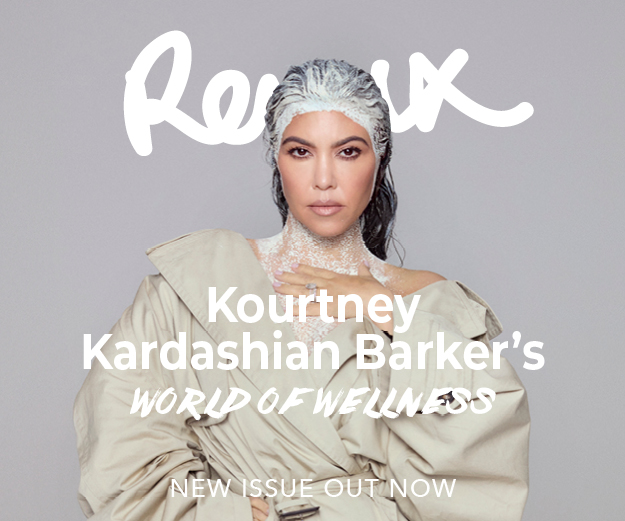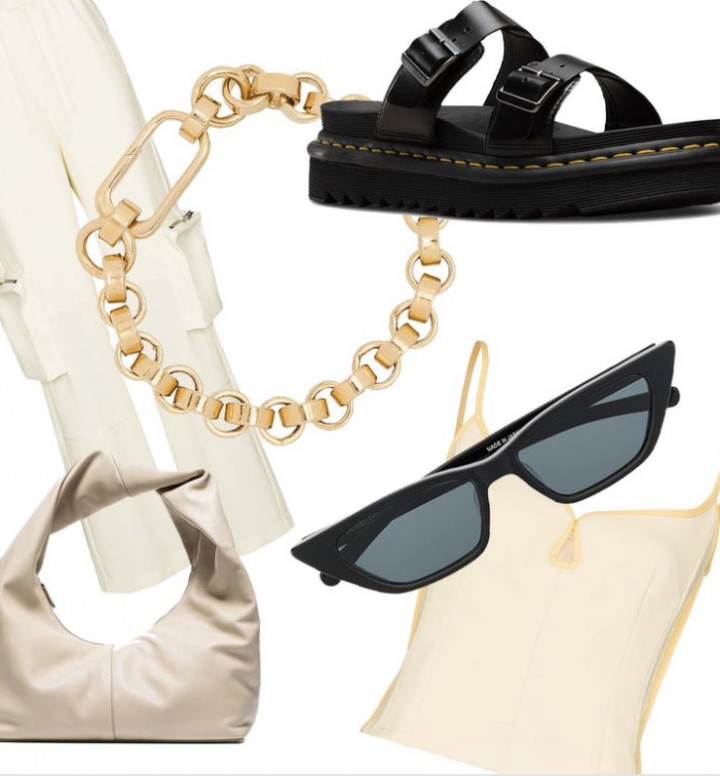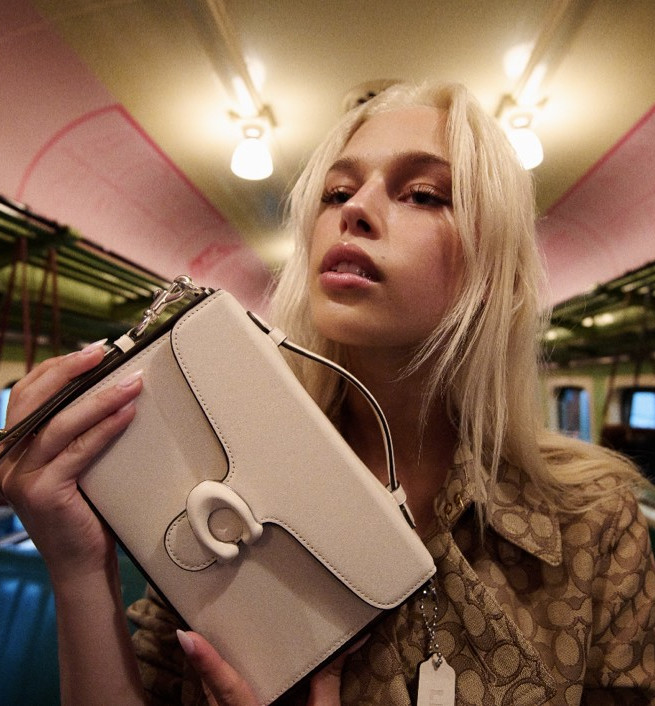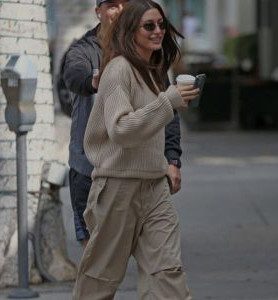Next in line
In the whirlwind of global fashion weeks, it’s easy to overlook the creative pulse of New Zealand’s industry. Yet, this small but formidable industry has long produced household names—Karen Walker, Zambesi, Wynn Hamlyn—who have shaped its identity on the world stage. At the centre of this evolution is Whitecliffe College of Fashion and Sustainability, an institution cultivating the next generation of designers poised to make their mark. Following their standout showcases at the 2024 Whitecliffe Fashion Show, we sat down with four emerging talents to explore their unique design languages and the legacies they hope to build in the future of fashion.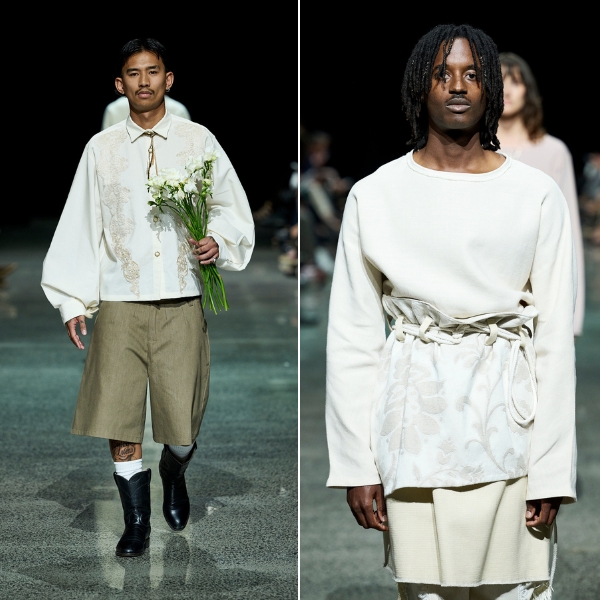
Kristian Yumul
Describe your design aesthetic in three words...
Unapologetic, graceful, minimal.
What inspired your latest collection?
My graduate collection 'KRISTIANITY' is rooted in my self-exploration. It draws inspiration from several sources, including childhood memories, the influence of older family members, my religious experiences, and the trials and tribulations I have faced. Themes of trauma, gratitude, faith, and hope flow through my work. Through this collection, I aimed to express my feelings visually and communicate my life experiences. 'KRISTIANITY' represents my journey for a higher sense of purpose and seeks to unravel the mysteries of what exists before birth, after death, and everything in between. One aspect often overlooked in art is the profound connection between art and religion. For me, 'KRISTIANTIY' embodies this connection while also reflecting my personal journey. It is more than just a collection – it is an extension of myself. Through this work, I embraced self-discovery and found meaning in pursuing my passion.
Which piece, past or present, are you most proud of and why?
I am most proud of my Filipino barong-style dress shirt. This piece was a long-held vision of mine, made with upcycled beautiful lace tablecloths from secondhand shops. It holds special significance and was the first piece I sold from my collection.
What’s the biggest misconception about New Zealand fashion, and how do you challenge it?
The brand on that tag doesn’t matter. Support local!
What excites you most about the future of fashion and where do you see yourself fitting in?
I see the future of fashion heading into a world where consumers will care more about the silhouettes, shapes and quality of their clothing. I am more than grateful to be a part of the new small team at Porter James Sports. The family and I have been working on some new and exciting pieces which will be out this year! Work never feels like work, and I am being the best at getting better. PJS4L!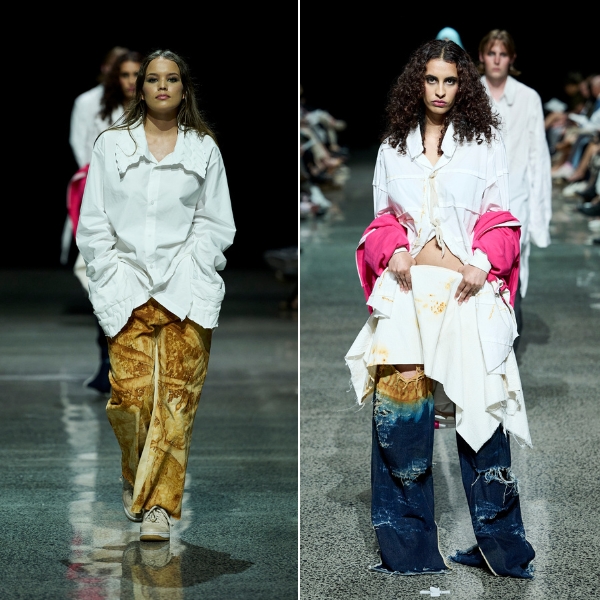
Theo Richards
Describe your design aesthetic in three words...
Cartoon, wasteland, sleaze.
What inspired your latest collection?
My graduate collection was inspired by the maximalist, jumbled and eclectic aesthetics born from technology-based modes of creation, consumption and communication.
Which piece, past or present, are you most proud of and why?
For my second-year collection, I made a silk dress, tied it up in some mangroves on the seashore, and left it for a couple of months. I was trying to achieve an organic distressing effect, but I was worried it would be swept out to sea or shredded into ribbons by the tides. When I recovered it though, it was perfect.
What’s the biggest lesson you learned from your latest collection and runway presentation?
I learnt how crucial collaboration and asking for help is. Fashion requires so many different skill sets. Making use of the people around you and utilising their abilities effectively is essential for a good result.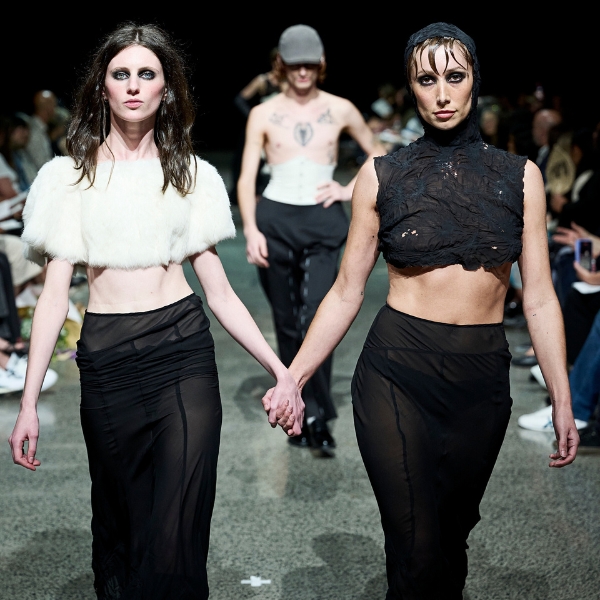
Chloë Pollard
Describe your design aesthetic in three words...
Subversive, empowering, bespoke.
What’s the biggest lesson you learned from your latest collection and runway presentation?
The runway presentation came very naturally to me as styling and final presentation are where my strengths lie. I chose my models before creating my garments so I could design something that felt right to their character, so the
clothes were never ‘wearing the model’; the model was owning the clothes. I let them have creative freedom with their walks so that they could have fun and I think that helped make my collection stand out.
How do you balance creativity with wearability?
I like to think I have found a good sweet spot in-between everyday wear and avant-garde. I don’t believe every garment needs to be highly practical, what matters is that you look and feel great. I balance creativity and wearability by continuously learning new skills and techniques because, with the right knowledge, almost anything can be made wearable.
What excites you most about the future of fashion and where do you see yourself fitting in?
I can’t wait to see how the New Zealand fashion industry continues to evolve. While many labels are closing or moving online, I’m interested to see which new designers and collectives will step into the spotlight. There’s so much young talent here and I hope the right opportunities arise. As for my place in the industry, I’m still learning where I fit best, but I’m exploring opportunities in Sydney and Paris.
Mia Christina Sutton
Describe your design aesthetic in three words...
Empowering, transformative, mindful.
What inspired your latest collection?
It started with my feelings about navigating through my twenties as a young woman in today's society. In the last couple of years, I've noticed myself getting more enraged at the world and the subconscious societal expectations that are placed upon my friends and I. Motivated by our internalised anger, I was led to research the history of feminism, women's emotional health and the detrimental impact suppressed rage has.
Which piece, past or present, are you most proud of and why?
The Tineke Dress and Corset (named after my Mum) was the most time consuming. Hand-sewing every knot onto the silk organza took me weeks and a lot of patience but I am so happy with the end product as I feel it really captures everything I wanted to portray. The pinched smocking with red broken strings reflect emotional scars of women affected by these social norms while also symbolising threads of solidarity that tie women together, whilst the red silk corset is there to represent suppression and control.
How do you balance creativity with wearability?
Bringing in themes of suppression and control, along with empowerment and rage, was hard to balance. Structured tailoring and tight forms represented silenced, stifled voices, while outbursts of gathers found on hems and pockets captured moments of release. To ensure wearability, I balanced these dramatic details with comfortable and breathable fabrics that allowed movement.
Photography by Ryan Patrick


